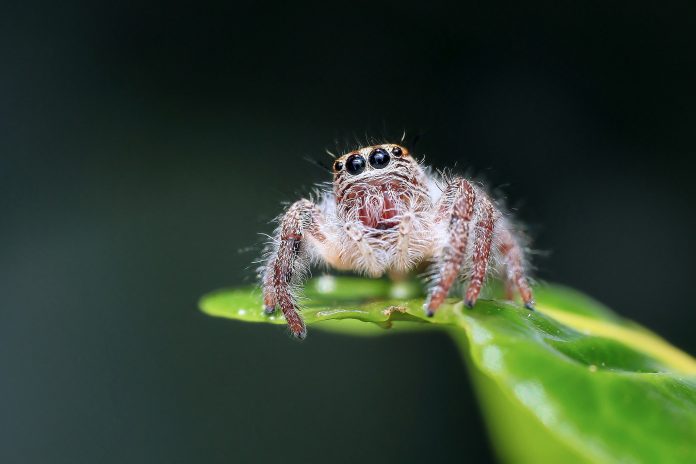Curious about the important role that spiders can play in your garden or homestead? If you’re a farmer, gardener, or homesteader looking for an adventurous way to bring natural balance and pest control to your property, then look no further – introducing the humble spider!
Spiders are often feared and misunderstood creatures that often get a bad reputation but they provide countless benefits when welcomed into your garden. From insect-catching abilities to acting as powerful biological controls of pests, there’s much more than meets the eye with these eight-legged friends.
Join us on this journey through the wonders of spider ecology and learn why having spiders around might just be one of nature’s most under-appreciated gifts.
Introducing the Eight-Legged Wonders of the Natural World
Prepare to be amazed as we delve into the world of eight-legged wonders. Spiders, scorpions, and octopuses are just a few examples of the fascinating creatures we’ll encounter.
Did you know that some spiders can jump up to 80 times their body length? Or that scorpions glow under ultraviolet light? And let’s not forget about the incredible intelligence and problem-solving abilities of octopuses.
These creatures may seem intimidating, but they play important roles in their ecosystems and are worth exploring. Join us on this adventure as we learn more about the eight-legged wonders of the natural world.
Understanding Why Spiders Are Necessary for a Healthy Garden
As you venture through your lush garden, you may come across some spider webs every now and then. But before you start clearing them out, have you ever wondered why spiders are necessary for a healthy garden?
These eight-legged creatures play a vital role in controlling pest populations, such as aphids and caterpillars, that can wreak havoc on your plants. In fact, some spiders are even known to consume other harmful insects like mosquitoes, flies, and ticks. Install melbourne security doors to prevent insects from going inside your home.
By having spiders roam freely in your garden, you can reduce the need for harmful pesticides and promote a more natural and thriving environment.
So next time you see a spider crawling on your plants, don’t fear it – embrace it as a valuable ally to your garden’s ecosystem. One way to determine whether the jumping spider is male or female is to measure them.
Discovering Different Types of Spiders and Their Habits
Venturing out into the great outdoors can uncover a plethora of interesting creatures, and spiders are no exception. These eight-legged arachnids come in all shapes and sizes, each with their unique habits and characteristics.
From the spindly daddy’s long legs to the fearsome black widow, exploring the world of spiders can be an exciting adventure. Some spiders spin intricate webs to catch their prey, while others resort to stealth and ambush tactics.
With so many species to discover, each with its fascinating quirks, delving into the realm of spiders can be an informative and thrilling experience.
How to Protect Pollinators While Keeping Spiders Around
When it comes to protecting pollinators, many people assume that getting rid of all spiders is the best course of action. However, that’s not necessarily the case.
Spiders are important predators that help keep bug populations in check. In fact, they can help protect pollinators. The key is to be strategic about where and how you place spider-friendly habitats.
For example, consider putting small spider homes in areas where bees and other pollinators are not likely to visit. This way, you can help maintain balance in the ecosystem and protect the hardworking pollinators that are so essential to our food supply.
So, while it may seem like an adventure to try to get rid of all of the spiders in your yard, try taking a more informed and balanced approach instead. However, if a significant spider population has invaded your home or garden, it is advised that you seek spider control services.
Tips for Attracting Beneficial Spiders to Your Garden
Imagine walking through your garden and being greeted by a group of beneficial spiders. Not only do they add to the beauty of the space, but they also help control pests and create a thriving ecosystem.
Attracting these eight-legged friends may seem daunting, but with a little effort and knowledge, you can encourage them to take up residence in your garden. Providing a diverse range of plants that offer shelter, food, and nesting opportunities is crucial.
Additionally, avoid using harmful pesticides and opt for organic solutions instead. Embrace the adventure of cultivating a spider-friendly garden and watch as it flourishes with the help of these fascinating creatures.
Benefits of Having Spiders in Your Landscape Beyond Pest Control
As you venture through your landscape, you may encounter spiders hanging from their intricate webs or scurrying across the ground. While their presence may make some people squirm, these eight-legged creatures offer benefits beyond just controlling pest populations. For starters, spiders are efficient hunters, catching a variety of insects that may try to harm your plants.
In addition to their pest control abilities, some spider species also act as pollinators, aiding in the reproduction of flowering plants. But that’s not all. Research shows that spiders play a role in soil health by breaking down organic matter and increasing nutrient availability. So before you reach for the bug spray or broom to sweep away a spider, remember that their presence has the potential to offer a range of benefits to your landscape.
Also, when considering landscaping and construction projects, understanding the ecosystem of your environment is paramount. As a landscape contractor or architect, integrating this knowledge into your designs can enhance the sustainability and functionality of outdoor spaces. For instance, incorporating spider-friendly habitats within green areas can foster a natural balance, reducing the need for chemical pest control and promoting biodiversity. At Ivan’s Landscape & Construction, we recognize the intricate connections between flora and fauna, and strive to create harmonious environments where beneficial organisms like spiders can thrive alongside human activity. By embracing these principles, our projects not only beautify landscapes but also contribute to the overall health and resilience of the ecosystem.
In conclusion, spiders can be surprisingly beneficial and interesting inhabitants of our gardens and landscape. By understanding these eight-legged wonders, we can learn to appreciate the role they play in our outdoor environment. Not only are these creatures important for pest control, but also as habitats and food sources for other insects. We can also take key actions to ensure their successful survival in our gardens like basic yard maintenance, understanding spider likes and dislikes, providing suitable hiding places, not using pesticides, and encouraging plants that attract spiders. Overall, welcoming spiders to your garden is a pleasant adventure to discovering different types of spiders while still promoting healthy pollinators for the entire ecosystem!














